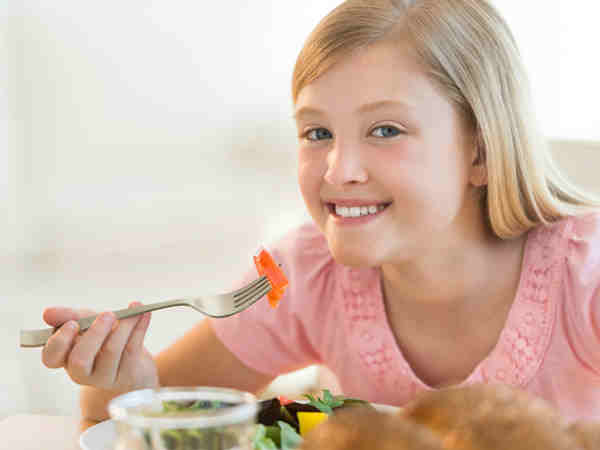
5 Foods You Think Your Kids Will Hate, but They'll
Jessica Cox, RD
Published May 27, 2015
Giving children the opportunity to explore new foods is a concept that Marina Chaparro, MPH, RDN, spokesperson for the Academy of Nutrition and Dietetics, emphasizes to adults — knowing that children who try new foods expand their taste preferences and learn to eat a variety of foods.
"Don't underestimate the taste preferences of children," says Chaparro. "Children don't need 'kid food.' As adults we tend to view kids' preferences as bland and limited, but this isn't always the case."
If you think these five healthy foods aren't kid-friendly, think again.
Fish
There's no doubt eating fish is healthy. The Dietary Guidelines for Americans recommend eating seafood twice a week, and fish contains a range of healthy nutrients, including omega-3 fatty acids.
There's just one problem. "Kids don't generally like fish," says Academy spokesperson Sara Haas, RDN, LDN. "But if you turn it into 'nuggets' or 'sticks,' it can be a real game-changer." Involve kids in cooking by having them help bread the fish. Use whole-wheat panko breadcrumbs, finely chopped nuts or unsweetened flaked coconut. Then, instead of frying, bake the fish for a healthier preparation. Kids can also help prepare dipping sauces, Haas says.
Edamame
Edamame contains high quality protein, making it an excellent option for vegetarians. It provides vitamin A, calcium and iron, too. These green soybeans have a mild, buttery flavor and kids will have a blast popping the beans out of the pods.
Add shelled edamame to stir-fry; toss with cooked rice and chopped fresh vegetables for a main dish salad; or, puree with olive oil, lemon juice and garlic for a quick dip.
Kale
This nutritional superstar contains fiber, potassium and vitamins A, K and C. Make it irresistible by turning the tough leaves into crunchy chips. Tear the leaves into pieces and bake at 350°F for 12 to 15 minutes or until crisp.
Registered dietitians Liz Weiss, MS, RDN, and Janice Bissex, MS, RDN — also known as the Meal Makeover Moms — recommend involving the kids in making a kale salad. Tell them it's time to "give the kale a massage" and let them rub the leaves with olive oil to make them tender. Offer a choice of toppings, such as chopped hard-boiled eggs, chickpeas, diced tomatoes, carrots or mushrooms. Weiss and Bissex also suggest adding fresh kale to smoothies for a fun and intriguing green color.
Avocados
Avocados provide heart-healthy monounsaturated fats, as well as fiber, potassium and folate. "Kids may shy away from this green fruit if it's simply diced and placed on a dinner plate," say Weiss and Bissex. "But if you mash it up and turn it into a savory guacamole with baked chips, kids will gobble it up." Or use mashed avocado instead of mayonnaise for a sandwich spread.
Canned Beans
Beans and peas contain protein, iron and zinc — nutrients generally attributed to meat. And, they also contain fiber, potassium and other nutrients generally found in vegetables. The Dietary Guidelines recommend everyone include beans and peas in their weekly diet.
Canned beans are convenient, mild in flavor and versatile. Weiss and Bissex recommend adding canned beans to soup, chili, quesadillas, nachos and even brownies!